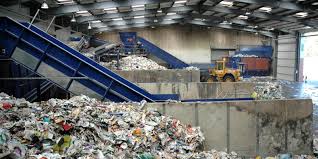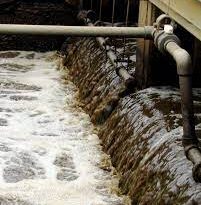Recommended Methods of Waste Disposal
The following are the recommended methods of waste disposal process:
1. Incineration
Incineration is a disposal method in which solid organic wastes are subjected to combustion so as to convert them into residue and gaseous products. This method is useful for disposal of residue of both solid waste management and solid residue from waste water management.
This process reduces the volumes of solid waste to 20 – 30 per cent of the original volume. Incineration and other high temperature waste treatment systems are sometimes described as “thermal treatment”. Incinerators convert waste materials into heat, gas, steam and ash.
Incineration is carried out both on a small scale by individuals and on a large scale by industry. It is used to dispose of solid, liquid and gaseous wastes. It is recognized as a practical method of disposing of certain hazardous waste materials (such as biological medical waste).
Incineration is a controversial method of waste disposal, due to issues such as emission of gaseous pollutants.
Incineration is common in countries such as Japan where land is scarce, as these facilities generally do not require as much area as landfills. Waste-to-energy (WtE) and energy-from-waste (EfW) are broad terms for facilities that burn waste in a furnace or boiler to generate heat, steam or electricity.
Combustion in an incinerator is not always perfect and there have been concerns about pollutants in gaseous emissions from incinerator stacks. Particular concern has focused on some very persistent organics such as dioxins, furans, PAHs which may be created which may have serious environmental consequences.
2. Recycling

Recycling is a resource recovery practice that refers to the collection and reuse of waste materials such as empty beverage containers. The materials from which the items are made can be reprocessed into new products.
Material for recycling may be collected separately from general waste using dedicated bins and collection vehicles are sorted directly from mixed waste streams and are known as kerb-side recycling, it requires the owner of the waste to separate it into various different bins (typically wheelie bins) prior to its collection.
The most common consumer products recycled include aluminum such as beverage cans, copper such as wire, steel food and aerosol cans, old steel furnishings or equipment, polyethylene and PET bottles, glass bottles and jars, paper board cartons, newspapers, magazines and light paper, and corrugated fibre board boxes.
PVC, LDPE, PP, and PS (see resin identification code) are also recyclable. These items are usually composed of a single type of material, making them relatively easy to recycle into new products. The recycling of complex products (such as computers and electronic equipment) is more difficult, due to the additional dismantling and separation required.
The type of material accepted for recycling varies by city and country. Each city and country has different recycling programmes in place that can handle the various types of recyclable materials. However, variation in acceptance is reflected in the resale value of the material once it is reprocessed.
3. Sustainability
The management of waste is a key component in a business’ ability to maintaining ISO14001 accreditation. Companies are encouraged to improve their environmental efficiencies each year by eliminating waste through resource recovery practices, which are sustainability-related activities.
One way to do this is by shifting away from waste management to resource recovery practices like recycling materials such as glass, food scraps, paper and cardboard, plastic bottles and metal.
4. Biological Reprocessing
Composting, Home composting, Anaerobic digestion, and Microbial fuel cell

Recoverable materials that are organic in nature, such as plant material, food scraps, and paper products, can be recovered through composting and digestion processes to decompose the organic matter.
The resulting organic material is then recycled as mulch or compost for agricultural or landscaping purposes. In addition, waste gas from the process (such as methane) can be captured and used for generating electricity and heat (CHP/cogeneration) maximizing efficiencies.
The intention of biological processing in waste management is to control and accelerate the natural process of decomposition of organic matter. (See resource recovery).
5. Energy Recovery

Anaerobic Digestion Component of Lübeck Mechanical Biological Treatment plant in Germany, 2007 is shown in Figure 5.9. The energy content of waste products can be harnessed directly by using them as a direct combustion fuel, or indirectly by processing them into another type of fuel.
Thermal treatment ranges from using waste as a fuel source for cooking or heating and the use of the gas fuel (see above), to fuel for boilers to generate steam and electricity in a turbine. Pyrolysis and gasification are two related forms of thermal treatment where waste materials are heated to high temperatures with limited oxygen availability.
The process usually occurs in a sealed vessel under high pressure. Pyrolysis of solid waste converts the material into solid, liquid and gas products. The liquid and gas can be burnt to produce energy or refined into other chemical products (chemical refinery). The solid residue (char) can be further refined into products such as activated carbon.
Gasification and advanced Plasma arc gasification are used to convert organic materials directly into a synthetic gas (syngas) composed of carbon monoxide and hydrogen. The gas is then burnt to produce electricity and steam. An alternative to pyrolisis is high temperature and pressure supercritical water decomposition (hydrothermal monophasic oxidation).
Read Also: Industrial Methods for Pollution Control
6. Resource Recovery
Resource recovery (as opposed to waste management) uses Llife Cycle Analysis (LCA) attempts to offer alternatives to waste management. For mixed Municipal Solid Waste (MSW) a number of broad studies have indicated that administration, source separation and collection followed by reuse and recycling of the non-organic fraction and energy and compost/fertilizer production of the organic material via anaerobic digestion to be the favoured path.
Avoidance and Reduction Methods
1. Waste Minimization
An important method of waste management is the prevention of waste material being created, also known as waste reduction.
Methods of avoidance include reuse of second-hand products, repairing broken items instead of buying new, designing products to be refillable or reusable (such as cotton instead of plastic shopping bags), encouraging consumers to avoid using disposable products (such as disposable cutlery), removing any food/liquid remains from cans, packaging, and designing products that use less material to achieve the same purpose (for example, light-weighting of beverage cans).
2. Waste Handling and Transport
Waste Collection Vehicle, Dustbin, and Waste Sorting

Waste collection methods vary widely among different countries and regions. Domestic waste collection services are often provided by local government authorities, or by private companies in the industry. Some areas, especially those in less developed countries, do not have a formal waste-collection system. Examples of waste handling systems include:
In Europe and a few other places around the world, a few communities use a proprietary collection system known as Envac, which conveys refuse via underground conduits using a vacuum system. Other vacuum- based solutions include the Metro Taifun single-line and ring-line systems.
In Canadian urban centres curb side collection is the most common method of disposal, whereby the city collects waste and/or recyclables and/or organics on a scheduled basis. In rural areas people often dispose of their waste by hauling it to a transfer station. Waste collected is then transported to a regional landfill.
In Taipei, the city government charges its households and industries for the volume of rubbish they produce. Waste will only be collected by the city council if waste is disposed in government issued rubbish bags. This policy has successfully reduced the amount of waste the city produces and increased the recycling rate.
In Israel, the Arrow Ecology company has developed the Arrow Bio system, which takes trash directly from collection trucks and separates organic and inorganic materials through gravitational settling, screening, and hydro-mechanical shredding. The system is capable of sorting huge volumes of solid waste, salvaging recyclables, and turning the rest into biogas and rich agricultural compost.
The system is used in California, Australia, Greece, Mexico, the United Kingdom and in Israel. For example, an Arrow Bio plant that has been operational at the Hiriya landfill site since December 2003 serves the Tel Aviv area, and processes up to 150 tons of garbage a day.
While waste transport within a given country falls under national regulations, trans-boundary movement of waste is often subject to international treaties. A major concern to many countries in the world has been hazardous waste.
Read Also: Institutional Arrangement for Pollution Control
The Basel Convention, ratified by 172 countries, deprecates movement of hazardous waste from developed to less developed countries. The provisions of the Basel Convention have been integrated into the EU waste shipment regulation. Nuclear waste, although considered hazardous, does not fall under the jurisdiction of the Basel Convention.
3. Technologies
Traditionally the waste management industry has been slow to adopt new technologies such as Radio Frequency Identification (RFID) tags, GPS and integrated software packages which enable better quality data to be collected without the use of estimation or manual data entry.
Technologies like RFID tags are now being used to collect data on presentation rates for curb-side pick-ups.
Benefits of GPS tracking is particularly evident when considering the efficiency of ad hoc pick-ups (like skip bins or dumpsters) where the collection is done on a consumer request basis.
Integrated software packages are useful in aggregating this data for use in optimisation of operations for waste collection operations.
Rear vision cameras are commonly used for OH&S reasons and video recording devices are becoming more widely used, particularly concerning residential services.
In conclusion waste management is a core of the control strategies of pollution. All major sources of pollution arise from the wastes that are generated either from the municipalities or the industries.
The concept and definition of waste management include the collection, transport, processing, or disposal, managing and monitoring of waste materials. Waste generation is an aspect of human living and the challenges to managing it are imperative to any organized human community.
A good number of methods and technologies are now available for the management of wastes of any nature and kind we generate.
Some of these technologies range from scrubbers, cyclones, incinerators to plasma gasification in the industries and landfills, composts, and recycling technologies in the municipalities. Strategies of waste management usually include; waste minimization, resource recovery and energy recovery.



